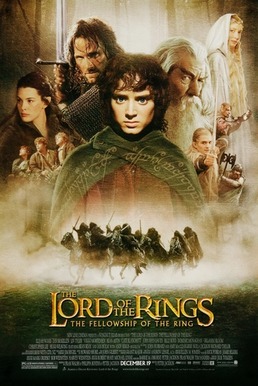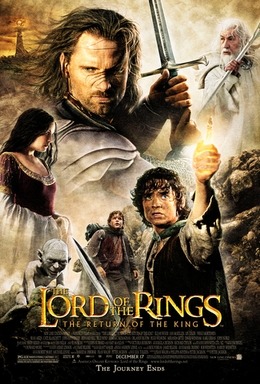Lord of the Rings, hailed for its grandiose scope, unparalleled sense of adventure, endearing characters, and enduring relationships, stands as the quintessential fantasy film series of all time. Now, two decades after the release of “The Fellowship of the Ring,” this beloved franchise has once again captured the public’s imagination with Amazon’s highly anticipated television series, “The Rings of Power.” Moreover, Warner Bros. has recently unveiled plans for multiple new additions to the Lord of the Rings film universe, expanding upon the beloved lore. In parallel, Amazon is already setting its sights on the second season of “Rings of Power,” their Middle-earth TV series. For those seeking information on where to start watching these epic films, we’ve compiled a handy guide to assist you in your quest for Middle-earth adventures.
Hence, for those embarking on the journey into Middle-earth for the first time, the prospect of watching the Lord of the Rings movies in chronological order may seem daunting. To ease this endeavor, we have crafted this article to provide newcomers with a roadmap to navigate both “The Lord of the Rings” and “The Hobbit” trilogies. We aim to ensure that those new to the series can dive into the cinematic world of Tolkien without fear of major spoilers, as we only reveal essential plot elements and character introductions.
An Introduction to “The Lord Of The Rings” And “The Hobbit” Movies
The “Lord of the Rings” and “The Hobbit” stand as two monumental cinematic achievements that have masterfully transported the enchanting world of J.R.R. Tolkien’s Middle-earth from the pages of literature to the grandeur of the silver screen. These epic fantasy franchises, skillfully helmed by the visionary director Peter Jackson, have not only captivated but also deeply immersed audiences in their breathtaking visuals, intricately drawn characters, and narratives that transcend time.
“The Lord of the Rings” trilogy, consisting of the masterfully crafted films “The Fellowship of the Ring,” “The Two Towers,” and “The Return of the King,” takes its viewers on an extraordinary odyssey into a realm oppressed by darkness. It plunges headfirst into the heroic quest to annihilate the sinister One Ring and the epic battle against the evil Sauron, exploring profound themes of camaraderie, unyielding courage, and the eternal struggle between the forces of good and evil.
In a parallel storytelling universe, “The Hobbit” trilogy, comprised of the mesmerizing chapters “An Unexpected Journey,” “The Desolation of Smaug,” and “The Battle of the Five Armies,” invites us on a prequel adventure. We journey alongside Bilbo Baggins, an initially reluctant hero, as he embarks on an epic quest with a company of bold dwarves, all with the singular purpose of reclaiming their homeland from the clutches of the fearsome dragon, Smaug.
Both trilogies have etched their names indelibly in the annals of cinema history. They are celebrated for their groundbreaking special effects that have brought mythical creatures and wondrous landscapes to vivid life, as well as for the exceptional performances delivered by their talented casts. These films have not only entertained but have also left an enduring mark on the world of cinema, enthralling successive generations of viewers and enshrining Middle-earth as one of the most cherished and enduring fictional universes ever conceived.
Two Ways To Watch The Trilogy Of “The Lord Of The Rings” And “The Hobbit” Movies
To immerse yourself in the cinematic world of Middle-earth in chronological and order of release dates, you’ll find that the Lord of the Rings trilogy preceded New Line Cinema’s decision to adapt J.R.R. Tolkien’s earlier novel – The Hobbit, as a cinematic prequel trilogy, all masterfully directed by Peter Jackson. Here’s the sequence:

1. Presented in Chronological Order
- “The Hobbit: An Unexpected Journey” (2012)
- “The Hobbit: The Desolation of Smaug” (2013)
- “The Hobbit: The Battle of the Five Armies” (2014)
- “The Lord of the Rings: The Fellowship of the Ring” (2001)
- “The Lord of the Rings: The Two Towers” (2002)
- “The Lord of the Rings: The Return of the King” (2003)
2. Presented in the Order of Their Release Dates
- “The Lord of the Rings: The Fellowship of the Ring” (2001)
- “The Lord of the Rings: The Two Towers” (2002)
- “The Lord of the Rings: The Return of the King” (2003)
- “The Hobbit: An Unexpected Journey” (2012)
- “The Hobbit: The Desolation of Smaug” (2013)
- “The Hobbit: The Battle of the Five Armies” (2014)
What Is The Difference Between The Two Ways?
In the order of release dates, they initially presented the tale of the Ring of Power and Bilbo’s adventures after the Lord of the Rings movies had already been released to the audience. Viewers were introduced to these events sequentially, first experiencing the epic journey of Frodo and the Fellowship of the Ring in The Lord of the Rings, and then learning about Bilbo’s earlier escapades and the history of the Ring of Power in The Hobbit.
However, if you consider the chronological timeline of the story within the fictional world, The Hobbit actually unfolds before the events of The Lord of the Rings, meaning that The Hobbit’s events precede Frodo’s quest to destroy the One Ring. So, while the movies were released out of sequence, the story timeline places The Hobbit before The Lord of the Rings in terms of event sequence.
An Overview Of Every Film Within The “Lord Of The Rings” And “The Hobbit” Series
1. “The Hobbit: An Unexpected Journey” (2012)
Marks director Peter Jackson’s return to the captivating world of Middle-earth. Following a nearly decade-long hiatus, during which he crafted the acclaimed “King Kong,” Jackson embarked on a new cinematic odyssey centered on “The Hobbit” trilogy. This prequel story unfolds before the events chronicled in “The Lord of the Rings.” The tale introduces readers to Bilbo Baggins, Frodo’s uncle and a character pivotal to the Middle-earth saga. Bilbo becomes the first Hobbit to stumble upon the enigmatic One Ring, setting in motion a chain of events that will forever alter the fate of Middle-earth. As he embarks on an unexpected journey filled with peril and wonder, Bilbo encounters a diverse array of characters, both friend and foe, all of whom contribute to the rich tapestry of Tolkien’s world. This film serves as the initial step in a new adventure that bridges the gap between “The Hobbit” and “The Lord of the Rings,” offering fans a deeper understanding of the lore and an opportunity to revisit the beloved realms of Middle-earth.
2. “The Hobbit: The Desolation of Smaug” (2013)
The Desolation of Smaug continues the epic fantasy journey with a classic element: a formidable dragon. Bilbo, joined by a party of 13 dwarves and the wise wizard Gandalf, embarks on a perilous quest to confront and conquer the dragon – Smaug. Their ultimate goal is to reclaim the long-lost Dwarf Kingdom of Erebor, and the mysterious power of the One Ring plays a crucial role in their mission. In this installment, the enigmatic Smaug is brought to life through the talents of Benedict Cumberbatch, who masterfully employs motion capture technology to render the dragon’s imposing presence onscreen. Smaug’s inclusion not only adds a thrilling layer of danger but also contributes to the rich tapestry of mythical creatures that populate Tolkien’s world. This propels the narrative forward with breathtaking visuals, heart-pounding action sequences, and character development as Bilbo and his companions venture deeper into the heart of Middle-earth. This second chapter of “The Hobbit” trilogy keeps audiences enthralled with its high-stakes adventure and the allure of one of fantasy literature’s most iconic creatures.
3. “The Hobbit: The Battle of the Five Armies” (2014)
This delivers an unforgettable climax to the trilogy, surpassing even the epic Battle of Helm’s Deep in scale and intensity. As the future of Middle-earth hangs in the balance, the gravity of the situation compels all to take up arms in a battle of unprecedented proportions. In this thrilling conclusion, a coalition of dwarves, elves, men, and the evil forces of orcs converges in an explosive clash. The stakes are higher than ever before, as the outcome of this titanic struggle will determine the fate of the entire realm. The film masterfully weaves together the diverse factions with unique motivations and alliances, resulting in a spectacular and action-packed finale. “The Battle of the Five Armies” showcases the pinnacle of Middle-earth’s conflicts, highlighting themes of heroism, sacrifice, and the enduring struggle between good and evil. This grand conclusion cements the legacy of “The Hobbit” trilogy as a thrilling and emotionally charged addition to the expansive world of J.R.R. Tolkien’s creation.
4. “The Lord of the Rings: The Fellowship of the Ring” (2001)
This film sets the stage for an epic tale, chronicling the journey of Frodo Baggins, a humble hobbit entrusted with the monumental task of transporting the One Ring to its ultimate destination. As Frodo embarks on this dangerous expedition, he encounters a diverse array of beings, including elves, dwarves, wizards, and formidable creatures, each of whom challenges his courage in ways previously unimagined. At its core, this film is a heroic adventure that explores themes of friendship, sacrifice, and the enduring struggle between good and evil. It introduces viewers to Middle-earth’s rich and intricate world, a realm filled with wonders and dangers alike. Frodo’s quest not only tests his own mettle but also forges enduring bonds of fellowship that will shape the destiny of this fantastical world. “The Fellowship of the Ring” is the first step into a larger-than-life narrative that captivates hearts and minds with its immersive storytelling and unforgettable characters.
5. “The Lord of the Rings: The Two Towers” (2002)
The epic adventure unfolds with unwavering intensity in the enthralling sequel, “The Lord of the Rings: The Two Towers” (2002). Frodo and his steadfast companion, Sam, press onward on their treacherous journey to Mount Doom, where they aim to destroy the One Ring. Along the way, they cross paths with Gollum, a former possessor of the Ring, whose presence adds a layer of complexity to their quest. Simultaneously, other members of the Fellowship prepare to confront the evil forces of Saruman in the climactic Battle of Helm’s Deep. The film’s portrayal of this epic battle resonated deeply with fans, catapulting it to become the third-highest-grossing movie of all time upon its release. Moreover, “The Two Towers” not only advances the overarching narrative of the series but also delves into the depths of character development and the eternal struggle between good and evil, captivating audiences with its immersive storytelling and breathtaking visuals.
6. “The Lord of the Rings: The Return of the King” (2003)
Serving as the grand culmination of the trilogy, it stands as the crowning jewel that clinched numerous prestigious awards. With a staggering 11 Academy Award nominations, it achieved a remarkable feat by winning every single one, including coveted honors like Best Director and Best Picture. The characters’ intertwined fates in this epic finale unfold in a crescendo of storytelling excellence. Frodo, Sam, and the enigmatic Gollum persevere in their quest to rid Middle-earth of the malevolent One Ring, a journey fraught with personal sacrifice and unrelenting challenges. Meanwhile, Aragorn, Gandalf, and the bold members of the Fellowship muster their courage for a final, desperate confrontation against the dark lord Sauron. This not only provides a spectacular and emotionally resonant conclusion to the epic saga but also showcases the ultimate triumph of good over evil. Its record-setting Oscar wins underscore its cinematic brilliance, cementing its place in film history as a monumental achievement in storytelling and filmmaking.
Conclusion
As fans of “The Lord of the Rings” franchise, there are various approaches to embarking on the cinematic journey through Middle-earth. However, choosing to watch these films in chronological order or the order of release dates, offers a distinct and compelling experience. This both sequence mirrors the way these stories were originally presented to audiences, creating a deeper connection to the narrative flow and character arcs.




